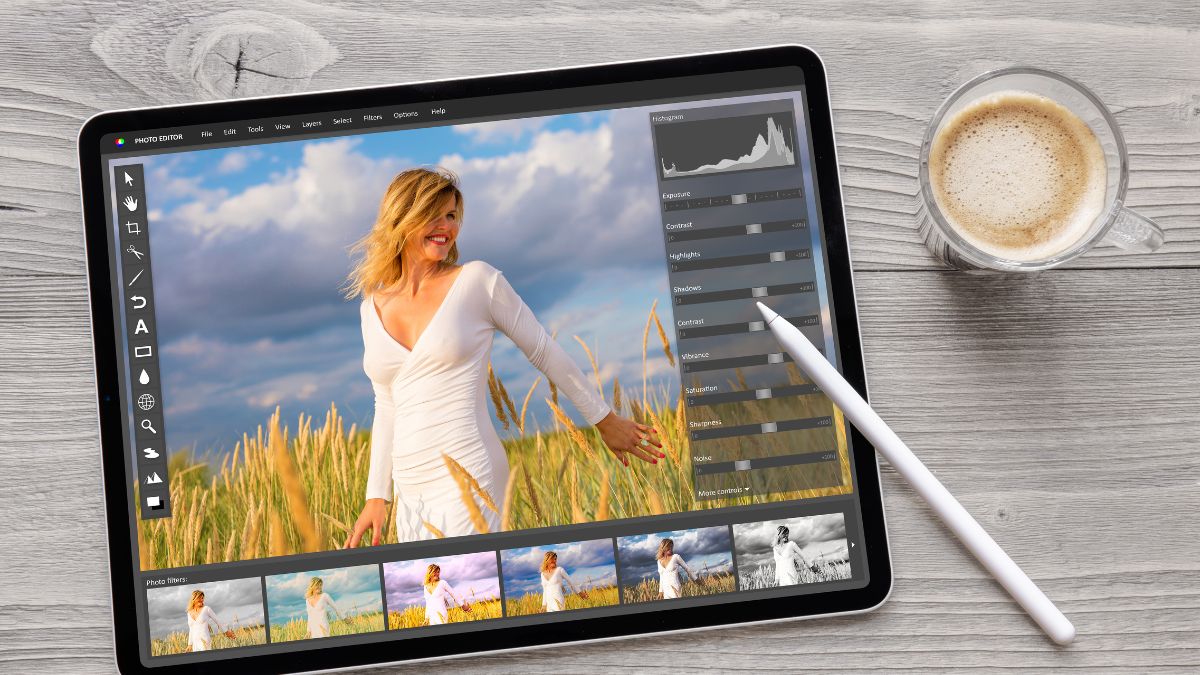The Apple iPad has been leading the way in the tablet market for quite some time, and if you’ve been keeping up with Apple news, then you’ll have heard of the Apple Pencil. But does the iPad come with a Pencil, and is working with all iPads?
The Apple Pencil is sold separately from all Apple iPad models. It comes in two types that are limited to specific models of iPads, and have different functions.
Let’s explore the features of the iPad lineup and the Apple Pencil, as well as learn about what comes in the box, and whether the Apple Pencil is really worth all the hype. So let’s get right into it and find out a thing or two about this great stylus!
Does the iPad Pro Come With a Pencil?
The Apple Pencil is sold separately from the iPad Pro when buying from Apple’s website. So, no, iPad Pro does not come with a Pencil. In the box, you’ll get the iPad Pro, a USB-C charge cable measuring one meter, and a 20W USB-C power adapter. [1]
You can sometimes find some deals to bundle the two together via retailers that also stock Apple products, such as Amazon or other big box stores, so keep a lookout for them around the big sale events.
The iPad Pro is a premium model of the iPad, and it is a bit surprising that the Apple Pencil doesn’t come as default with it, considering the price point of the iPad Pro.
The Apple Pencil works with both the iPad Pro 12.9-inch and the iPad Pro 11-inch for the 2nd generation of the Apple Pencil.
Keep in mind for the 12.9-inch version it is only the 3rd generation and later that is compatible, whereas for the 11-inch model it is from the 1st generation onwards that the Pencil works.
The Apple Pencil 1st generation works on both the iPad Pro 12.9-inch for both the 1st and 2nd generation, all models of the iPad Pro 10.5-inch and 9.7-inch.
Does the iPad Air Come With a Pencil?
The iPad Air doesn’t come with the Apple Pencil, it is a separate accessory you have to purchase.
The iPad Air is supposed to be the most travel-friendly version of the iPad, so perhaps it is to be expected that you don’t get an Apple Pencil with it, but given the lack of other features it would be a nice addition.
The 1st generation Apple Pencil only works on the iPad Air for the 4th generation and later, whereas the Apple Pencil 2nd generation works on the 3rd generation and later for the iPad Air.
Does the iPad Mini Come With a Pencil?
The iPad Mini also doesn’t come with the Apple Pencil, and given that you’re looking at about 50% of the device’s price being just over the Apple Pencil’s cost, this is perhaps unsurprising.
The iPad Mini needs to be at least 6th generation to work with the Apple Pencil generation 2, and 5th generation or later for the Apple Pencil 2nd generation.
Does iPad 10.2 Come With a Pencil?
The iPad doesn’t come with the Apple Pencil, and only the Apple Pencil 1st generation works with it.
Is It Worth Buying a Pencil With an iPad?
The Apple Pencil is a great stylus that works very well with compatible Apple products.
First, it’s important to note that any Apple Card owner can pay a small monthly contribution over 12 months for the Apple Pencil, which also has 0 percent interest.
The other thing to keep in mind when you want to purchase the Apple Pencil, is what are you going to use it for?
If you find yourself loving handwritten notes, or your job involves designing or manipulating photographs, then the Apple Pencil is almost a must-have.
It allows your iPad to be used as a graphics tablet rather than just the basic tablet.
Further, the other group of people that this is recommended for are people who like using styluses to interact with everything, especially useful in colder climates when you are wearing gloves a lot.
The Apple Pencil isn’t the only iPad stylus out there that will work with an iPad.
If they’re pressure sensitive, they will pair using Bluetooth and aren’t going to be fully supported across all apps.
Don’t even bother to buy a non-pressure sensitive stylus; you may as well just use your finger.
Do All iPad Models Support the Apple Pencil?
The Apple Pencil has two different versions, designated as 2nd generation and 1st generation.
The 2nd generation is the newer one, with the iPad mini (6th generation), iPad Air (4th generation and later), iPad Pro 12.9-inch (3rd generation and later), and iPad Pro 11-inch (1st generation and later) all supporting use of the Apple Pencil 2nd generation.
The 1st generation Apple Pencil is supported on a larger range of devices.
This includes the iPad mini (5th generation), iPad (6th generation and later), iPad Air (3rd generation), iPad Pro 12.9-inch (1st and 2nd generation), iPad Pro 10.5-inch, and the
iPad Pro 9.7-inch.
If you’re unsure of what model you have, take a look at the back of your device for the quickest way to identify it. Generally, the model number will be located on the bottom edge under the Apple logo.
Otherwise, you can open Settings on your iPad, tap General, then tap About.
The top section should contain device information including the model number. The model number is a letter followed by four numbers and no slash (for example, A12345).
If the number you see has a slash ‘/’, that’s actually the part number. If you tap the part number, it will reveal the model number.
Which Apple Pencil to Choose?
There are some differences between the two Apple Pencils, so let’s look at them to compare their pros and cons.
The 1st generation Apple Pencil can be paired with iPad using the Lightning connector located under the end cap of Apple Pencil, and you can also quick-charge it by plugging it into the iPad lightning port.
However, this method of charging the Apple Pencil is not as convenient as the 2nd generation pencil, and the detachable end cap could get lost.
The required USB adapter could also get lost, and most importantly there is no multi-tap functionality for the 1st generation pen.
The 2nd generation Apple Pencil is the newer one, and pairing is now done via a magnet on the side of the iPad Pro, which also allows charging.
The double-tap functionality gives additional options to apps that support it, such as the very useful undo function. The tactile feel of the pencil is also a lot better, with a slight texture on the Pencil’s body giving it much more grip than the first generation version.
The downside of the magnet is that it isn’t that hard to accidentally bump the Pencil off the magnet, potentially losing it.
One way around this is to pick up a case with a pen holder. One way around this is to grab a case with an additional layer of protection, such as the LOVE MEI iPencil Holder that uses removable adhesive silicone to attach to your case.
This then gives your pen a secure attachment point so you don’t have to rely solely on the magnet.
What Are Off-Brand Apple Pencil Alternatives?
Logitech Crayon
Logitech has been a big player in the peripherals segment for some time. They have also put out a quality stylus that works very well with most iPads.
The Logitech Crayon is their offering for the stylus working on the iPad Pro 12.9 Inch (3rd Gen), iPad Pro 11 inch, iPad (6th, 7th, 8th and 9th Gen), iPad Air (3rd, 4th, 5th Gen), and the iPad Mini 5.
Although it supports fast charging, it is not pressure sensitive. However, it does have all the other usual features you need from a stylus, such as not allowing your palm to activate on the screen and leave marks.
Adonit Note+
A great budget alternative, the Note+ from Adonit has great pressure sensitivity, but suffers from a drawback of the buttons not working in many Apple apps.
It is compatible with iPad Air (3rd and 4th Generation), iPad mini (5th Generation), iPad (6th, 7th and 8th Generation), and the iPad Pro (3rd, 4th Generation for both 11-inch & 12.9-inch).
DRYMOKINI Stylus Pen
Working with the iPad 9th generation, iPad Pro, iPad Mini, and iPad Air, the DRYMOKINI Stylus Pen is a great all-around pen for writing or drawing.
Also featuring tilt sensitivity and a premium 1.5 mm nib for great lines, you’ll be able to draw using pixel precision. It also has sensitive touch technology and doesn’t require any apps to be installed or need to use Bluetooth.
ZAGG Pro Stylus
Another great budget option, ZAGG’s pen is lightweight and features a dual-tip for better accuracy. With palm rejection and tilt recognition, it means you can put your palm on the screen without leaving smudges or marks.
It works with all iPads from 2018 and newer, and supports magnetically attaching to iPad Pro 11 and iPad Pro 12.9 like the Apple Pencil 2nd generation.
JAMJAKE Stylus Pen
Working with Apple iPad Pro (11 and 12.9 Inch), the iPad Air (3rd and 4th generation), the iPad (6th, 7th, and 8th generation) and the,iPad Mini (5th generation), the JAMJAKE Stylus Pen has changeable nibs to get the exact right feel for you.
A no-stress install experience as there is no need to install any software to get this stylus working.
It has one touch operation by tapping the cap button, with an automatic switch into sleep mode after being idle for five minutes
Rated at 20 hours of continuous use with a lightning fast 90 mins charge, you get the Stylus Pen along with 2 replacement tips and a USB-C charging cable.
Can You Connect a Mouse to an iPad?
An iPad is compatible with a Magic Mouse, another Bluetooth mouse, or a USB mouse.
Turn on the Magic Mouse, and then in the iPad settings pull up Bluetooth, then ensure it is turned on. Select the Magic Mouse when it appears in the Other Devices list.
If a PIN is required, just type 0000 (four zeros), then tap Pair.
For a Bluetooth mouse, follow the included instructions to put it into pairing mode and then open up the Bluetooth settings like above.
With the appropriate cable or adapters, you can connect various third-party mouse devices with the iPad using USB and USB-based receivers.
If you have a USB mouse, you’ll need to get a lightning connector, get Apple’s Lightning to USB Camera Adapter, or if you have the USB-C connector, get the USB-C to USB Adapter.
If you have a wireless mouse, you can put the dongle in the USB port and connect it that way.
Mouse vs. Apple Pencil: Which Is Better?
The Apple Pencil is a great device that works the best with the iPad out of all the other stylus choices out there. If you’ve got the budget for it, there’s no other better choice.
A mouse, aside from the Magic Mouse, is going to require some type of adapter or cable and so can get messy and awkward, so unless you’re getting a Magic Mouse it’s better to either go with the Apple Pencil for an input device.


